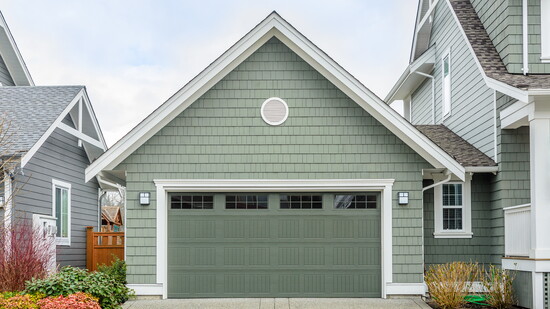Annual garage door maintenance is essential for ensuring your garage door’s long-term functionality, safety, and efficiency. Neglecting its upkeep could result in a variety of problems, such as annoying sounds, unnecessary wear, or even safety hazards. Regular upkeep by trained technicians can mitigate these risks and extend the lifespan of your garage door.
We spoke to Mike Glende at Twin City Garage Door to put together a simple guide that provides you with a detailed garage door maintenance checklist. By following these garage door maintenance tips, you can ensure that your garage door is consistently in top condition, giving you peace of mind and a hassle-free experience.
Garage Door Maintenance Checklist
Garage door maintenance starts with basic tasks that can be done by a homeowner including cleaning the door tracks, using silicone-based lubricant on hinges and rollers, and inspecting for signs of wear.
More complex tasks like balancing the door, replacing cables, or repairing springs can be dangerous since these components are often under tension and better left to a professional technician who has been trained and has the proper tools to work on these components which are usually under high tension.
Visual Inspection: Seeing Beyond the Surface
Commence your garage door maintenance journey with a meticulous visual inspection. Scrutinize every inch for signs of wear, rust, or damage. Pay close attention to the springs, cables, rollers, and hinges. Identifying and resolving minor issues might save you money on repairs in the future.
Lubrication: Ensuring Smooth Operation
A well-functioning garage door is distinguished by smooth operation, which is achieved through regular lubrication. Invest in a high-quality silicone or lithium-based lubricant to grease the moving parts—rollers, hinges, and springs. Avoid generic lubricants like WD-40, as they can trap dust and debris, even causing more serious problems.
Tighten Hardware: Bolstering Stability
The continual movement of your garage door can cause the nuts and bolts to loosen with time. Regularly inspect and tighten all hardware—brackets, nuts, and screws. This simple step not only prevents vibrations and noises but also ensures a quieter and more efficient garage door.
Balance Check: Harmony in Motion
An unbalanced garage door has the potential to put unnecessary pressure on the opener, leading to premature wear. To check the balance, disconnect the opener and physically raise the door halfway. A balanced door should stay in place; any movement indicates the need for adjustments, prompting a call to a professional.
Test Safety Features: Safeguarding Your Equipment
Photo-eye sensors and auto-reverse mechanisms are among the safety features included with modern garage doors. Monthly tests of these features are crucial. Place an object in the door’s path to ensure it reverses immediately upon contact. Address any issues promptly to ensure the safety of your family.
Weatherstripping Inspection: Shielding Against the Elements
Weatherstripping is your garage’s first line of defense against the elements. Regularly inspect it and replace any damaged sections. Proper weatherstripping enhances insulation and keeps water and pests at bay.
Inspect and Clean Tracks: Guiding Smooth Transitions
Smooth tracks are essential for the proper functioning of your garage door. Regularly inspect them for obstructions or debris and clean them to ensure unobstructed movement. Use a level to confirm an appropriate alignment.
Performing annual garage door maintenance not only enhances safety and reliability but also saves money in the long run by avoiding large-scale repairs and extending the lifespan of your garage door.
